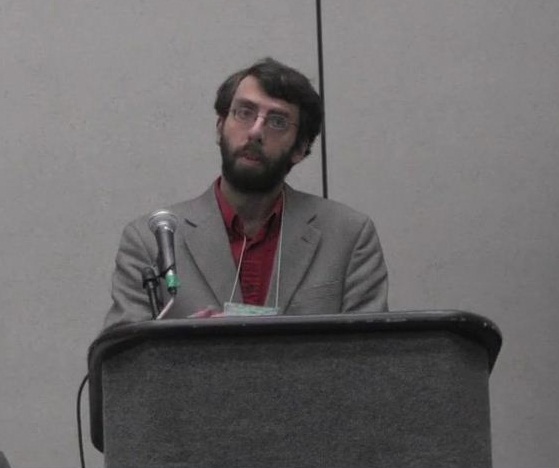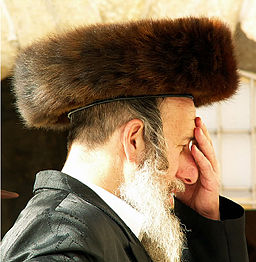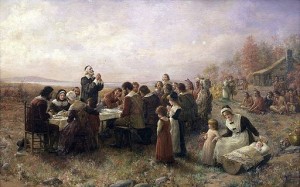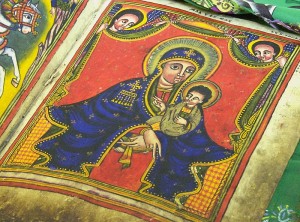 A brief news story on Alabama Public Radio recently discussed the delay of an Alabama State School Board vote on social studies textbook adoption because of some complaints that several of the texts demonstrated bias. The groups petitioning for the exclusions, including the Eagle Forum of Alabama and Act for America asserted that several texts contained anti-Christian and pro-Muslim statements. Continue reading “It’s Not Fair!”
A brief news story on Alabama Public Radio recently discussed the delay of an Alabama State School Board vote on social studies textbook adoption because of some complaints that several of the texts demonstrated bias. The groups petitioning for the exclusions, including the Eagle Forum of Alabama and Act for America asserted that several texts contained anti-Christian and pro-Muslim statements. Continue reading “It’s Not Fair!”
Discussing the “Nones”

This year in Baltimore, at the Annual Meeting for the American Academy of Religion, Culture on the Edge members Monica Miller and Steven Ramey — along with Chip Callahan (University of Missouri), Sean McCloud (UNC Charlotte), and Patricia O’Connell Killen (Gonzaga University) — were panelists in a roundtable discussion, “Discussing the ‘Nones’: What They Say about the Category of Religion and American Society” where part of their thoughts on the Nones stemmed from the ideas and conversations around their co-authored Huffington Post article. Continue reading “Discussing the “Nones””
Notes from the Field: Nones and the AAR

The rationale motivating and grounding the panel, “Discussing the ‘Nones’: What They Say about the Category of Religion and American Society”, which was part of the Religion and Popular Culture Group in the American Academy of Religion meeting in Baltimore in November 2013, was to initiate a conversation over and about what the construction of the category “Nones” says (or doesn’t say) about the category of religion and religion in American society.
The label “Nones” typically refers to those who report “no religious affiliation” on surveys, with recent reports emphasizing a growing number of those counted as “None,”—1 in 5 by an October 2012 Pew Forum Report. Here, the Edge‘s own Monica Miller and Steven Ramey reflect on their participation in this panel, which also included Sean McCloud (UNC Charlotte), Chip Callahan (Missouri) and Patricia O’Connell Killen (Gonzaga). Continue reading “Notes from the Field: Nones and the AAR”
Description as Reduction
 What is the nature and benefit of prayer? That question is at the heart of an exchange last month between Leon Wieseltier, the literary editor of the New Republic, and Tanya Luhrmann, a Stanford University professor of Anthropology. In “Dumbing Religion Down in the New York Times,” Wieseltier critiques Luhrmann’s contributions concerning prayer and speaking in tongues. Continue reading “Description as Reduction”
What is the nature and benefit of prayer? That question is at the heart of an exchange last month between Leon Wieseltier, the literary editor of the New Republic, and Tanya Luhrmann, a Stanford University professor of Anthropology. In “Dumbing Religion Down in the New York Times,” Wieseltier critiques Luhrmann’s contributions concerning prayer and speaking in tongues. Continue reading “Description as Reduction”
Perpetual Pilgrims and Indians
 Some Thanksgiving thoughts for the U.S. Thanksgiving holiday. Despite various corrections and critiques (e.g., here and here), schoolchildren across the U.S. often learn and even reenact the story of Pilgrims and Native Americans joining together for a meal to celebrate the first harvest for the Pilgrims. When considered from the perspective of the study of processes of identification, the reenactment of this origin story perpetuates the position of dominant groups, despite the narrative of cooperation built into the origin story. Continue reading “Perpetual Pilgrims and Indians”
Some Thanksgiving thoughts for the U.S. Thanksgiving holiday. Despite various corrections and critiques (e.g., here and here), schoolchildren across the U.S. often learn and even reenact the story of Pilgrims and Native Americans joining together for a meal to celebrate the first harvest for the Pilgrims. When considered from the perspective of the study of processes of identification, the reenactment of this origin story perpetuates the position of dominant groups, despite the narrative of cooperation built into the origin story. Continue reading “Perpetual Pilgrims and Indians”
Find the Edge in Baltimore

Hoping to snag a button? Then find us in Baltimore.
Friday:
Craig Martin will be responding at North American Association for the Study of Religion Panel 2: Critically Engaged: Graduate Pedagogy in the Introductory Classroom (P22-209) on Friday, 1:30 – 3:30 pm in the Hilton Baltimore (Blake Room). Continue reading “Find the Edge in Baltimore”
Why Is the Study of Religion Important?

You can make a range of excellent arguments for the value of the study of religion. In my department, we have been highlighting the value of the critical and creative thought that many of our students develop in our courses, their understanding of human behavior and social formation, and the recognition of the power of labels to discipline action and construct identifications, to name a few. Continue reading “Why Is the Study of Religion Important?”
The Fact Tank
 The Pew Research Center has a blog, named the Fact Tank, that is a component of an intriguing way of branding itself.
The Pew Research Center has a blog, named the Fact Tank, that is a component of an intriguing way of branding itself.
Pew Research Center is a nonpartisan fact tank that informs the public about the issues, attitudes and trends shaping America and the world. It conducts public opinion polling, demographic research, media content analysis and other empirical social science research. Pew Research does not take policy positions. It is a subsidiary of The Pew Charitable Trusts.
They reinforce what initially caught my eye in this, the language “fact tank”, when they emphasize their role to “inform” us of what is influencing society through “empirical” research. Continue reading “The Fact Tank”
Meaningless Surveys: The Faulty Mathematics of the Nones
 Culture on the Edge’s Monica Miller and Steven Ramey co-authored the following post,
Culture on the Edge’s Monica Miller and Steven Ramey co-authored the following post,
published originally at the Huffington Post on November 7, 2013.
People unaffiliated with a religion, commonly grouped as the ‘Nones’, are all the rage right now and have beckoned responses from faith leaders to philosophers and scholars of religion. Common among such responses is an unwavering and uncritical belief in the statistical reality of this group; very few, in our opinion, have questioned how this group came to exist in the laboratory of statistical analysis and myopic survey questions. Most recently, a series on the New York Times Room for Debate page featured references to the Nones and the similar Pew report on the status of Judaism in America. However, the methodological basis for all of this excitement is actually quite thin. Continue reading “Meaningless Surveys: The Faulty Mathematics of the Nones”
Strategic Images

How can people portray revered figures, like the icon of Mary and Jesus above from Ethiopia? News reports from Jharkhand in eastern India have described a conflict over a statue of the Virgin Mary. (View an image of the statue here.) Some leaders of the Sarna community, what is often labeled a “tribal” community in India, have complained that the statue depicts her in the traditional dress of the Sarna and with a dark complexion. Some have speculated that the image is designed to confuse the local population into associating the statue with the local goddess Sarna Ma, thus encouraging conversion to Christianity. Sarna who identified as Christians assert their right to present Mary in dress that they associate with their heritage. Subsuming local divine figures into a different configuration to facilitate conversion is often described as a common practice in different historical and regional contexts. Continue reading “Strategic Images”
